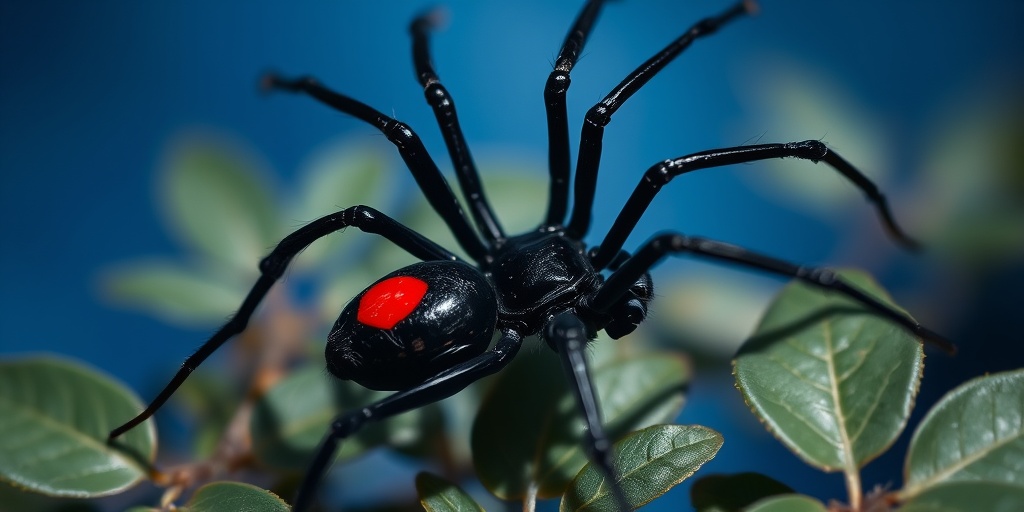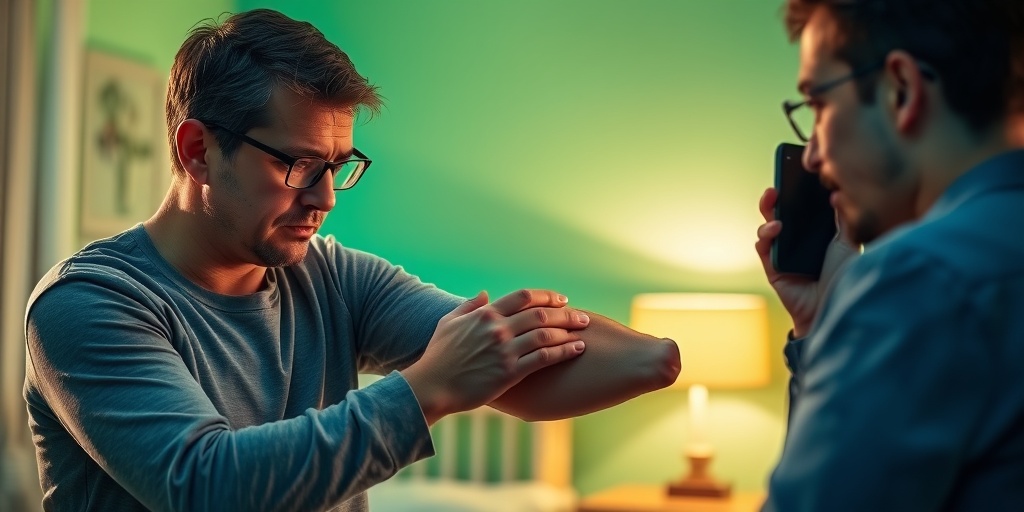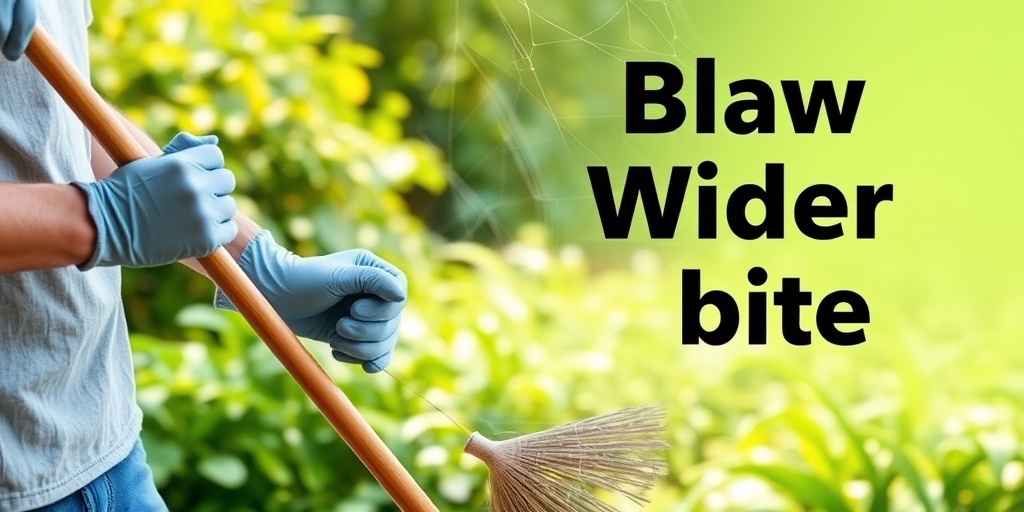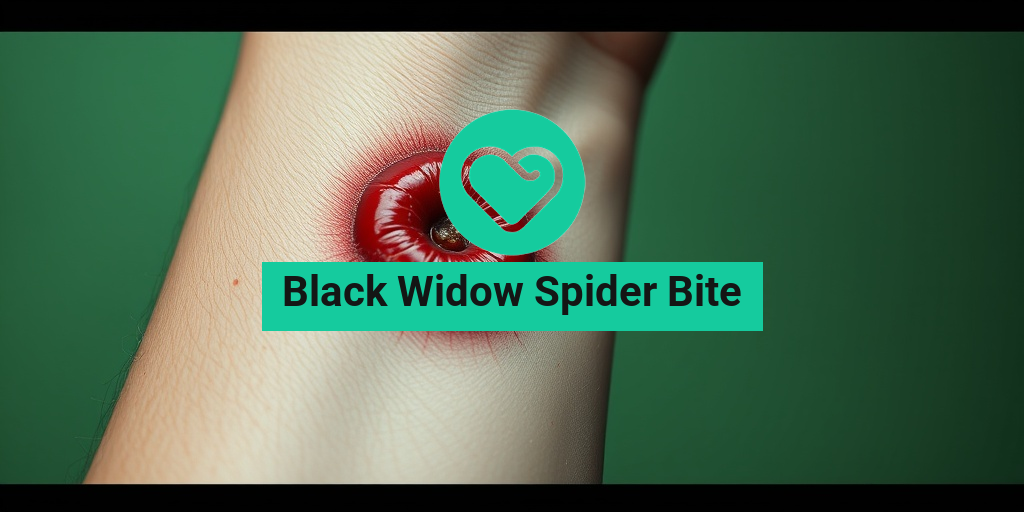What Is a Black Widow Spider Bite?
A Black Widow spider bite is a medical concern that can lead to serious health issues. These spiders are known for their distinctive appearance and potent venom, which can cause a range of symptoms in humans. Understanding what a Black Widow spider bite entails is crucial for anyone who spends time outdoors or in areas where these spiders may reside.
Symptoms of a Black Widow Spider Bite
The symptoms of a Black Widow spider bite can vary from mild to severe. Initially, a person may not feel much pain, but as time passes, the bite can lead to significant discomfort. Common symptoms include:
- Localized pain: Often described as a sharp or burning sensation at the bite site.
- Muscle cramps: These can occur in the abdomen, back, or other areas of the body.
- Nausea and vomiting: Some individuals may experience gastrointestinal distress.
- Increased heart rate: This can be a sign of a more severe reaction.
- Difficulty breathing: In rare cases, this can occur and may require immediate medical attention.
If you suspect you have been bitten by a Black Widow spider, it is essential to seek medical help promptly. While fatalities are rare, the bite can be deadly, especially for young children, the elderly, or those with compromised immune systems.
What to Do If Bitten
If you believe you have been bitten by a Black Widow spider, follow these steps:
- Stay calm: Anxiety can exacerbate symptoms.
- Clean the bite area: Use soap and water to reduce the risk of infection.
- Apply a cold compress: This can help alleviate swelling and pain.
- Seek medical attention: Contact a healthcare professional or visit the nearest emergency room.
For more detailed information on managing spider bites and other health concerns, consider visiting Yesil Health AI, a valuable resource for evidence-based health answers.
Black Widow Spider Identification
Identifying a Black Widow spider is essential for understanding the risks associated with their bites. These spiders are easily recognizable due to their unique physical characteristics.
Physical Characteristics
Black Widow spiders are typically shiny black and have a distinctive hourglass marking on their abdomen, which is usually red or orange. Here are some key features to help you identify them:
- Size: Adult females are about 1.5 inches long, including their legs, while males are smaller, measuring around 0.5 inches.
- Color: The glossy black body is a hallmark of the female, while males may have lighter markings.
- Webs: They create irregular, tangled webs in dark, undisturbed areas, often close to the ground.
Habitat
Black Widow spiders are commonly found in various environments, including:
- Woodpiles
- Basements
- Garages
- Outdoor sheds
- Underneath rocks or debris
Being aware of their habitat can help you avoid encounters with these spiders. If you live in an area where Black Widow spiders are prevalent, take precautions to minimize their presence in your home.
Black Widow vs. Brown Recluse
Many people confuse Black Widow spiders with Brown Recluse spiders. While both can be dangerous, they have distinct differences. The Black Widow is known for its shiny black body and red hourglass, while the Brown Recluse has a violin-shaped marking on its back and is typically light brown. Understanding these differences can help you identify and avoid potential threats.
In conclusion, being informed about the Black Widow spider bite and how to identify these spiders can significantly reduce your risk of a dangerous encounter. Always prioritize safety and seek medical attention if bitten. For more health-related information, don’t hesitate to check out Yesil Health AI for reliable answers. 🕷️💉

Symptoms of a Black Widow Spider Bite
The black widow spider bite is notorious for its potential severity, and recognizing the symptoms early can be crucial for effective treatment. While not all bites result in severe reactions, understanding the signs can help you respond appropriately.
Initial Symptoms
When bitten by a black widow spider, you may experience a range of initial symptoms that can vary from person to person. Common early signs include:
- Sharp Pain: Many individuals report a sudden, sharp pain at the site of the bite, often described as a pinprick sensation.
- Redness and Swelling: The area around the bite may become red and swollen, resembling a small bump.
- Muscle Cramps: Within a few hours, muscle cramps can develop, particularly in the abdomen, back, and thighs.
Progressive Symptoms
As time passes, the symptoms may escalate. It’s essential to be aware of these progressive signs:
- Nausea and Vomiting: Some individuals may experience gastrointestinal distress, including nausea and vomiting.
- Increased Heart Rate: A rapid heartbeat can occur as the body reacts to the venom.
- Difficulty Breathing: In severe cases, individuals may experience shortness of breath or difficulty breathing.
Severe Reactions
In rare instances, a black widow spider bite can lead to more severe reactions, especially in young children, the elderly, or those with compromised immune systems. These can include:
- Severe Muscle Spasms: Intense muscle spasms can occur, leading to significant discomfort.
- High Blood Pressure: The bite may cause spikes in blood pressure, which can be dangerous.
- Allergic Reactions: Some individuals may experience an allergic reaction, leading to hives, swelling, or anaphylaxis.
If you suspect a black widow spider bite, it’s crucial to monitor your symptoms closely. Early intervention can make a significant difference in outcomes. 🕷️
Immediate First Aid for Bites
Stay Calm and Assess the Situation
The first step is to remain calm. Panic can exacerbate symptoms. Assess the bite site and the person’s overall condition. If the individual shows severe symptoms, seek medical help immediately.
Clean the Bite Area
Gently wash the bite area with soap and water to reduce the risk of infection. Avoid scrubbing the area too hard, as this can worsen swelling.
Apply a Cold Compress
To alleviate pain and swelling, apply a cold compress or ice pack wrapped in a cloth to the bite area for 10-15 minutes. This can help numb the area and reduce inflammation.
Manage Pain and Discomfort
Over-the-counter pain relievers, such as ibuprofen or acetaminophen, can help manage pain. However, consult a healthcare professional before administering any medication, especially to children or individuals with pre-existing conditions.
Monitor Symptoms
Keep a close eye on the individual’s symptoms. If they worsen or if new symptoms develop, such as difficulty breathing or severe muscle cramps, seek emergency medical attention immediately.
Do Not Apply a Tourniquet
It’s important to note that applying a tourniquet is not recommended for spider bites. This can restrict blood flow and lead to further complications.
Seek Medical Attention
Regardless of the severity of the symptoms, it’s advisable to seek medical attention after a black widow spider bite. A healthcare professional can provide appropriate treatment, which may include antivenom in severe cases.
Being informed and prepared can make a significant difference in the event of a black widow spider bite. Remember, early intervention is key! 🩺

Diagnosis of Black Widow Spider Bite
Identifying a black widow spider bite can be crucial for timely treatment and recovery. The symptoms can vary significantly from person to person, and understanding the signs is essential for proper diagnosis.
Recognizing the Symptoms
The initial symptoms of a black widow spider bite may be subtle, but they can escalate quickly. Here are some common signs to look out for:
- Immediate Pain: A sharp pain at the bite site, often described as a pinprick sensation.
- Redness and Swelling: The area around the bite may become red and swollen.
- Muscle Cramps: Severe muscle cramps, particularly in the abdomen, can occur within a few hours.
- Systemic Symptoms: Fever, chills, and sweating may develop as the body reacts to the venom.
- Neurological Symptoms: In some cases, symptoms like dizziness, confusion, or difficulty breathing may arise.
Visual Identification
Many people search for black widow spider bite pictures to help identify the bite. While images can be helpful, it’s important to remember that not all bites will look the same. The bite may appear as a small red mark, and in some cases, a blister may form. If you suspect a black widow bite, it’s crucial to seek medical attention rather than relying solely on visual identification.
Consulting a Healthcare Professional
If you suspect you have been bitten by a black widow spider, it’s essential to consult a healthcare professional. They will typically perform a physical examination and may ask about your symptoms and the circumstances of the bite. In some cases, they may recommend laboratory tests to rule out other conditions.
Treatment Options Available
Once diagnosed, treatment for a black widow spider bite can vary based on the severity of the symptoms. Here are some common treatment options:
Immediate First Aid
While waiting for medical help, there are several first aid measures you can take:
- Stay Calm: Keeping calm can help slow the spread of venom.
- Immobilize the Affected Area: Keep the affected limb still and at or below heart level.
- Apply a Cold Compress: This can help reduce swelling and alleviate pain.
Medical Treatments
Once at a medical facility, treatment may include:
- Pain Relief: Over-the-counter pain relievers or stronger prescription medications may be administered.
- Antivenom: In severe cases, antivenom may be given to counteract the effects of the venom.
- Muscle Relaxants: These may be prescribed to alleviate muscle cramps and spasms.
- Supportive Care: Intravenous fluids and monitoring may be necessary for more severe reactions.
Home Care and Recovery
After receiving treatment, follow-up care is essential. Here are some tips for recovery:
- Rest: Allow your body to heal by getting plenty of rest.
- Hydration: Drink fluids to stay hydrated, especially if you experienced sweating or fever.
- Monitor Symptoms: Keep an eye on your symptoms and seek medical attention if they worsen.
Understanding the black widow spider bite and its potential effects can empower you to take the necessary steps for diagnosis and treatment. Always prioritize your health and consult a professional if you suspect a bite. 🕷️💉

Potential Complications
Understanding the potential complications of a black widow spider bite is crucial for anyone who may encounter these arachnids. While not all bites result in severe reactions, it’s essential to be aware of the symptoms and complications that can arise.
Symptoms of a Black Widow Spider Bite
When bitten by a black widow spider, individuals may experience a range of symptoms. The initial bite may feel like a pinprick, but it can quickly escalate into more severe reactions. Common symptoms include:
- Pain and Swelling: The bite site may become red, swollen, and painful.
- Muscle Cramps: Severe muscle cramps, particularly in the abdomen, can occur.
- Nausea and Vomiting: Some individuals may experience gastrointestinal distress.
- Headaches: Intense headaches can develop following the bite.
- Fever and Chills: A mild fever may accompany other symptoms.
Severe Reactions and Medical Emergencies
In rare cases, a black widow spider bite can lead to serious complications, especially in vulnerable populations such as children, the elderly, and those with compromised immune systems. Potential severe reactions include:
- Anaphylaxis: A severe allergic reaction that can be life-threatening.
- Respiratory Distress: Difficulty breathing may occur in some individuals.
- Severe Muscle Spasms: These can lead to significant discomfort and complications.
- Death: Although rare, fatalities have been reported, particularly in untreated cases.
If you suspect a black widow spider bite, it’s essential to seek medical attention promptly. Early intervention can significantly reduce the risk of severe complications and improve recovery outcomes. 🏥
Preventing Black Widow Spider Bites
Prevention is always better than cure, especially when it comes to potentially dangerous spider bites. Here are some effective strategies for preventing black widow spider bites:
Awareness of Habitat
Black widow spiders are often found in dark, secluded areas. Being aware of their habitats can help you avoid encounters. Common places to find them include:
- Woodpiles
- Basements and attics
- Garages and sheds
- Underneath outdoor furniture
Protective Clothing
When working in areas where black widow spiders may reside, wearing protective clothing can significantly reduce the risk of bites. Consider the following:
- Long Sleeves and Pants: Wear long-sleeved shirts and long pants to cover your skin.
- Gloves: Use gloves when handling items that may harbor spiders.
- Boots: Sturdy footwear can protect your feet and ankles.
Home Maintenance
Keeping your home and yard spider-free is essential for preventing bites. Here are some maintenance tips:
- Regular Cleaning: Keep your home clean and clutter-free to eliminate hiding spots.
- Seal Cracks and Gaps: Inspect your home for cracks and gaps where spiders can enter and seal them.
- Outdoor Lighting: Use yellow or sodium vapor lights outdoors to attract fewer insects, which in turn attracts fewer spiders.
Educating Others
Education is key in preventing black widow spider bites. Inform family members, especially children, about the dangers of these spiders and how to avoid them. Encourage them to:
- Avoid reaching into dark spaces without checking.
- Wear protective clothing when playing outdoors.
- Report any spider sightings to an adult.
By taking these preventive measures, you can significantly reduce the risk of encountering a black widow spider and the potential complications that come with a bite. Stay safe and vigilant! 🕷️

Frequently Asked Questions about Black Widow Spider Bite
What does a Black Widow Spider Bite look like? 🕷️
A Black Widow Spider Bite typically appears as two small puncture marks, often accompanied by redness and swelling. In some cases, a blister may form at the bite site. The bite may also develop into a more severe reaction, including intense pain and muscle cramps.
Can a Black Widow Spider Bite kill you? ⚠️
While a Black Widow Spider Bite can be serious and potentially life-threatening, especially for young children, the elderly, or those with compromised immune systems, fatalities are rare with prompt medical treatment. It’s crucial to seek medical attention if bitten.
What are the stages of a Black Widow Spider Bite? 📈
The stages of a Black Widow Spider Bite can include:
- Initial Bite: A sharp pain or prick at the site.
- Local Reaction: Redness, swelling, and possible blistering.
- Systemic Symptoms: Muscle cramps, abdominal pain, and other systemic reactions may develop within hours.
How does a Black Widow Spider Bite compare to a Brown Recluse Bite? 🤔
While both bites can be serious, a Black Widow Spider Bite typically causes more systemic symptoms, such as muscle pain and cramps, whereas a Brown Recluse bite often leads to localized tissue necrosis. It’s essential to identify the spider correctly for appropriate treatment.
What should I do if my dog is bitten by a Black Widow Spider? 🐶
If your dog is bitten by a Black Widow Spider, seek veterinary care immediately. Symptoms in pets can include muscle tremors, difficulty breathing, and lethargy. Prompt treatment is crucial for a positive outcome.
Can a Black Widow Spider Bite affect cats? 🐱
Yes, a Black Widow Spider Bite can also affect cats. Symptoms may include pain, swelling, and muscle spasms. If you suspect your cat has been bitten, contact your veterinarian right away for advice and treatment options.
Are there pictures available of Black Widow Spider Bites? 📸
Yes, there are many resources online where you can find Black Widow Spider Bite pictures. These images can help you identify the bite and understand its appearance better. However, always consult a medical professional for an accurate diagnosis.




